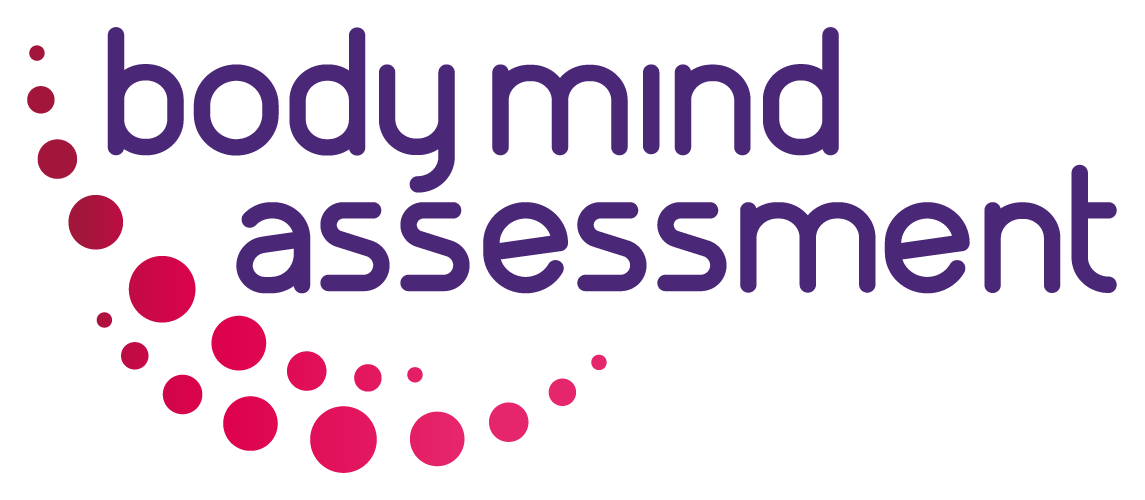Burnout syndrome poses a significant challenge for an increasing number of people. Understanding its mechanisms is the first step towards overcoming it. In this article, we will explore the causes and symptoms of Burnout, also known as Professional Exhaustion Syndrome, often linked to our work or study lives. Additionally, we will provide a list of tips to help you steer clear of burnout!
- What is Burnout Syndrome?
- Other Symptoms of Burnout
- The Cycle of Burnout Syndrome
- Burnout shows up
- Who is More Prone to Burnout Syndrome?
- Burnout syndrome and Character Structures
- Schizoid
- Oral
- Psychopathic
- Masochist
- Rigid
- Treatment for Professional Exhaustion Syndrome
- 1. Seek Individualized Support
- 2. Avoid Quick Fixes with Burnout Syndrome
- 3. Change Your Relationship with Work
- 4. Develop New Healthy Habits
- 5. Start Slow
- 6. Be Creative
- Next steps if you’re dealing with burnout syndrome
What is Burnout Syndrome?
Burnout syndrome is a mental health disorder, often associated with our relationship with work or studies, to the extent that it is also known as Professional Exhaustion Syndrome. The term “burnout” comes from English and can be translated as “burning all” or “burning until the end.” This term describes the common symptoms experienced in burnout: lack of energy, exhaustion, and a feeling that there is no more fuel left to burn in our bodies.
Other Symptoms of Burnout
- Headaches
- Insomnia, especially when consumed by thoughts of pending tasks
- Sense of defeat or hopelessness, even when things are going well around you
- Difficulty focusing on tasks that were once simple
- Feelings of incompetence, always demanding more from oneself
- Fear of losing everything if people make mistakes
- Isolation
The Cycle of Burnout Syndrome
The symptoms of burnout hinder concentration and increase fatigue, creating a cycle that intensifies the weariness. Initially, work may be seen as an escape – a way to distract oneself from personal challenges or avoid interactions with others. It might feel empowering to face all these challenges while juggling one’s tasks. The ego even whispers that only a true warrior can handle all of this – it’s not for just anyone! However, the problem is that work ceases to be a life element and becomes a prison, akin to an addiction.
Any deviation – be it colleagues needing favors, family wanting more time, or inconveniences like traffic, rain, or broken computers – triggers an aggressive reaction. It’s the same reaction one would have if deprived of an addiction because, in essence, work has become the sole source of pleasure and even personal value.
The cycle persists: the more we isolate ourselves and focus on tasks, the more other areas of life suffer. Excessive work, stress related to work, and guilt when not working will awaken other symptoms, and your body begins to show signs of fatigue. The burnout syndrome starts to reveal itself.
Burnout shows up
One morning, you wake up and feel that this isn’t your day. You might even consider taking a day off from work and staying at home. Feeling like you’re making a huge mistake, you create excuses and hide. Some people even disconnect from the internet to pretend they can’t respond to messages!
These breaks don’t help much; instead, they bring guilt, which deepens the emotional exhaustion. This is how the famous feeling of “being tired of doing nothing” begins, so common in Burnout Syndrome.
To avoid this sensation, the person starts seeking escapes that can silence the guilt: drinks, parties, games, binge-watching series, and so on. It’s the same approach previously taken concerning work, hiding in something to avoid dealing with their problems.
From this point on, life begins to spiral out of control, as these new “habits” destroy what remains of our routines, health, and relationships. If work was once the only source of personal value, now there is none. From this moment onward, it’s only a matter of time until Burnout syndrome strikes with all its force, causing days spent in bed.
At this point, life truly begins to spiral out of control, as these new “habits” destroy what’s left of our routines, health, and relationships. If work used to be the sole source of personal value, now there’s none. From this moment on, it’s only a matter of (little) time until Burnout Syndrome arrives with all its force, leading you to spend days without getting out of bed.
Who is More Prone to Burnout Syndrome?
Oddly enough, burnout often affects people who appear to be “doing well,” such as students about to graduate or recently promoted professionals. This makes sense since they have spent the past years striving towards a goal and investing considerable energy.
Burnout syndrome and Character Structures
If you are familiar with the theory of Character Structures, you may already be imagining how Burnout Syndrome reaches each person. Understanding character structures will give you more clarity about burnout syndrome.
Schizoid
This is a creative person, but they may struggle to express or bring their ideas to life. Because of this, they often feel conflicted between their inner world and the real world, and they feel hurt when others don’t accept their contributions.
The schizoid character structure finds great comfort in working alone or in a position where they have space to be creative. However, they will feel a lot of exhaustion if they have to constantly expose themselves or seek approval for each idea. Before experiencing Burnout, they might go through the Impostor Syndrome, always imagining that they don’t belong in their current place.
Due to the introverted tendency of the schizoid character structure, Burnout can start showing signs through isolation – they will distance themselves from relationships before experiencing work-related problems. Friends, family, and even the person themselves may see this as a normal need for space, which delays the recognition of their exhaustion.
Oral
Going in the opposite direction, the oral character structure enjoys communicating and getting attention from people.
But when the environment doesn’t accept these characteristics well, the person may pressure themselves to stay quiet and hold back their feelings. This behavior isn’t natural and will build up energy that needs to find an outlet. The oral character structure is more likely to struggle with compulsions – like shopping, overeating, addictions, or even excessive crying. This way, they can temporarily forget about their frustrations. They also have a tendency to think they have to do more and more. They fell they don’t have enough time and they get lost in paralysis because of that.
Acting this way can bring more challenges, as the person will need to makes more effort to maintain a normal life while dealing with the pressures of their compulsions. By spending this extra energy, they create more space for Burnout Syndrome to take hold.
Psychopathic
The psychopathic character structure shines in leadership and negotiation positions but feels immense pressure if it lacks freedom.
One advantage of this character structure is its constant search for better situations, which can lead to a quicker job change or career transition, avoiding negative work situations before Burnout Syndrome occurs.
However, if the person doesn’t have the opportunity to change at a certain point in their life, they’ll need a lot of energy to accept undesirable conditions, leaving them vulnerable to Burnout. If the work environment is highly bureaucratic, with all the rules already set, the psychopathic character structure will face its worst nightmare.
Masochist
This character structure is strongly connected to Burnout Syndrome. It is commonly found in people who hold everything back, silently suffer, and take a long time to change their situation, even when things seem to be against them.
They are also the type of people who worry about everyone else’s problems and, in addition to dealing with their own emotions, they accumulate the emotions of others. This contributes to Burnout because this constant concern consumes a lot of their energy.
If you have a predominant masochist character structure, you may feel that you’re not doing well. You avoid seeking help and fight tiredness by showing that you are even stronger, more helpful, and more reliable – actions that bring Burnout Syndrome even closer.
This adaptation can go on for years until the breaking point arrives. It could be triggered by pressure for more efficiency (as the masochist character structure is methodical and likes processes) or a negative public exposure – their biggest fear. Since they have accumulated such intense emotional burden for a long time, the crisis can also be more severe and require months of recovery.
Rigid
This is the character structure of people who are always competing against themselves. The rigid person sees the world in a very objective way: some people succeed, and others don’t. This applies not only to work but can also be present in other areas of life – for example, some people are chosen for love, and others are not.
In an attempt to increase their chances and prove that they are the best choice, people with a strong rigid structure will want more. They want more titles, more money, or more tasks to show that they can handle everything. Things become an even bigger problem because the rigid character structure not only competes with the world – it competes against itself and today’s achievements are never enough.
It’s not hard to see how this worldview greatly contributes to Burnout Syndrome. It is one of the major forces behind the cycle of exhaustion and guilt, which we saw at the beginning.
Due to their intense focus on goals and objectives, the rigid person often doesn’t realize when the exhaustion is creeping in, and it’s a shock when they realize their energy suddenly ran out.
Treatment for Professional Exhaustion Syndrome
The good news is that burnout syndrome has treatment, and there are multiple approaches to achieve this. However, they all start with self-awareness. You need to understand which factors are contributing to your burnout, including physical well-being, thoughts, relationships, and work habits.
1. Seek Individualized Support
For those already experiencing burnout or feeling it approach day by day, individualized and personalized support is essential. Schedule the free session. You can understand your character structures, learn more about them, and assess how each area of your life is contributing to burnout.
2. Avoid Quick Fixes with Burnout Syndrome
There is no medication that can “cure” burnout. Medication prescribed by a doctor may alleviate parallel symptoms, such as headaches, stress, and insomnia. However, it is not a definitive solution. You still need to reorganize your life to distance yourself from the factors causing burnout.
3. Change Your Relationship with Work
Work should not be the pillar of your identity or an escape from every frustration. Instead, use work to achieve dreams, help others, and make a positive impact. Do not let work control you; instead, use it as a tool for personal growth.
4. Develop New Healthy Habits
Incorporate new habits that alleviate stress and fill your free time in healthy ways. Engage in exercises like walking, swimming, cycling, yoga, or dancing. Rest properly by allowing your thoughts to settle and meditate or spend time in peaceful surroundings. Spend quality time with loved ones and engage in conversations that matter. Consider improving your eating habits by choosing whole foods over processed ones. Spend time in nature and reconnect with the world beyond work. Cultivate your spirituality as it contributes to mental balance. Engage in hands-on hobbies to rest your mind and be present in the moment.
5. Start Slow
Avoid rushing into a new routine. Slow and gentle morning habits can set the tone for a positive day ahead. Take a few minutes each morning to pause before diving into the day’s challenges.
6. Be Creative
Choose a few options from the list to start with, and experiment to discover which bring you the most well-being. Combine different activities to maximize their benefits and build a new routine gradually.
Next steps if you’re dealing with burnout syndrome
Burnout syndrome is a serious challenge, especially for individuals whose personality structures contribute to it. However, it should not be an unbeatable obstacle.
We are a mix of five character structures with different intensities. Brazilian researchers created a method to measure the percentage of each structure in individuals. After finding out your combination, you will understand how to overcome burnout and distance yourself from exhaustion.
You will learn how to use your superpowers to build a happier and healthier life. Schedule your free discovery session now.
Visit our Youtube Channel.





